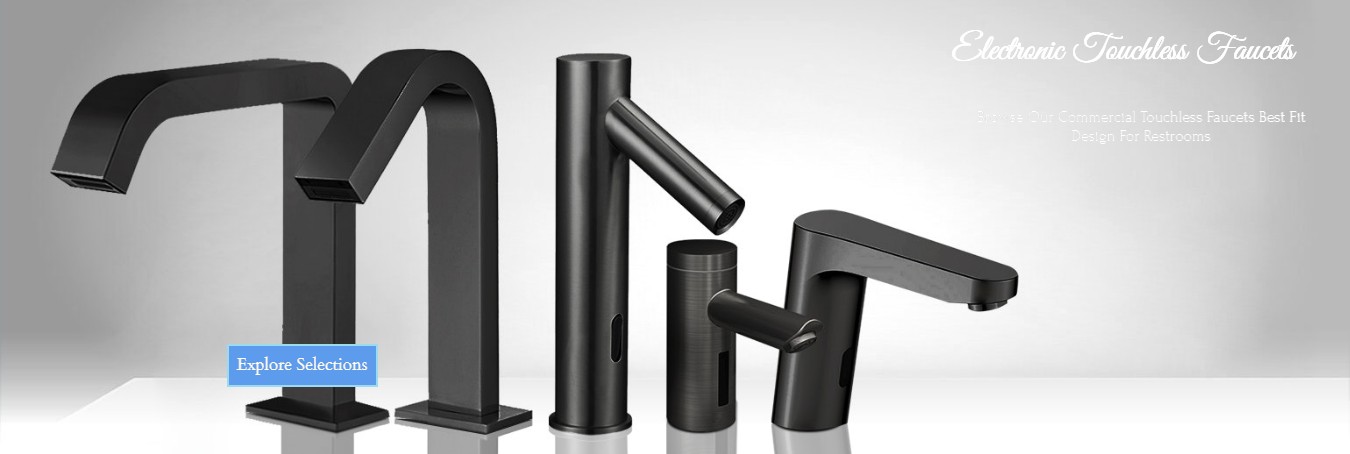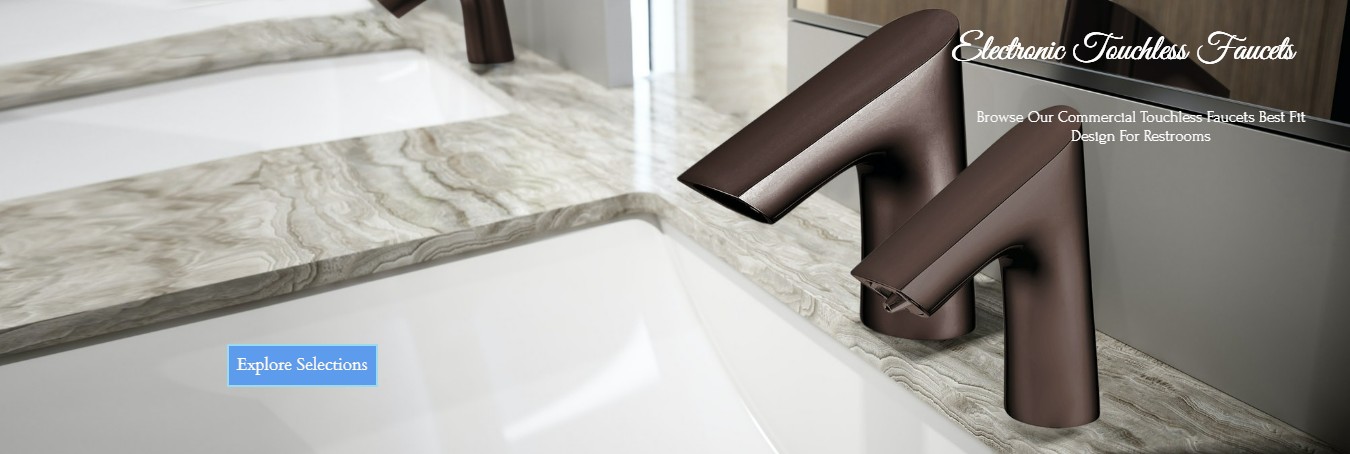
As we step into 2024, interior designers are adapting to a dynamic set of trends that are reshaping the approach to commercial restroom design. These trends reflect a comprehensive understanding of user needs, combining elements of aesthetics, functionality, hygiene, and inclusivity to elevate the overall guest experience.

Hygiene-Centric Restroom Design
The ongoing emphasis on hygiene, particularly in the wake of global events, has become a central theme in commercial restroom design. Designers are incorporating touchless technologies and antimicrobial surfaces to minimize physical contact points. Automatic faucets, sensor-operated soap dispensers, and hands-free dryers contribute to a more sanitary environment, enhancing both safety and user comfort.









Spatial Efficiency and Flexibility
Space planning in commercial restrooms is evolving towards efficiency and adaptability. Designers are exploring layouts that optimize available space, ensuring functionality without compromising aesthetics. Additionally, flexible design elements allow for easy reconfiguration to accommodate varying capacities and user needs over time.

Inclusive Design for Accessibility
The push for greater inclusivity is influencing restroom design, with a focus on ensuring accessibility for users of all abilities. Designers are incorporating features such as accessible stalls, properly positioned grab bars, and spacious layouts to accommodate wheelchair users. Attention is also given to visual and tactile cues for those with visual impairments, fostering a restroom environment that is universally accessible.

Sustainable and Eco-Friendly Practices
Sustainability continues to be a driving force in interior design, extending to commercial restrooms. Designers are opting for environmentally friendly materials, energy-efficient fixtures, and water-saving technologies. The integration of sustainable practices not only aligns with global conservation efforts but also caters to the growing demand for eco-conscious design solutions.

Technology Integration
The integration of technology is transforming the restroom experience. High-tech mirrors with integrated displays, smart lighting systems, and even virtual reality elements are finding their way into commercial restroom designs. These technological enhancements not only add a futuristic touch but also contribute to user engagement and satisfaction.

Biophilic Elements
Biophilic design principles, emphasizing a connection to nature, are increasingly influencing commercial restroom design aesthetics. Incorporating natural elements, such as living green walls, natural materials, and ample natural light, creates a more inviting and visually pleasing environment. This approach contributes to the well-being and comfort of restroom users.

Gender-Neutral and All-Gender Restrooms:
The move towards gender inclusivity is prompting the design of gender-neutral or all-gender restrooms. Designers are reimagining traditional restroom layouts to create spaces that are welcoming and inclusive for individuals of all gender identities. This trend reflects a broader societal shift towards recognizing and accommodating diverse needs.
Artistic and Unique Restroom Designs:
Restrooms are no longer purely functional spaces; they are becoming opportunities for artistic expression. Interior designers are incorporating unique and visually striking elements, from vibrant tile patterns to custom-designed fixtures, to create memorable and aesthetically pleasing restroom environments.
Smart Maintenance Solutions:
The incorporation of smart maintenance solutions is streamlining facility management. Designers are exploring features such as predictive maintenance sensors that alert staff to potential issues, reducing downtime and ensuring a consistently well-maintained restroom space.
In conclusion, the trends influencing commercial restroom design in 2024 and beyond reflect a holistic approach that goes beyond aesthetics. Interior designers are responding to evolving user expectations, integrating technology, prioritizing hygiene, embracing inclusivity, and fostering sustainability. These trends collectively contribute to an enhanced guest experience, making commercial restrooms more functional, aesthetically pleasing, and attuned to the evolving needs of diverse user groups.
Touch vs. Touchless: How to Choose Between Them
For bathroom faucets, commercial or otherwise, one of the major considerations is between touch and touchless faucets. A touch faucet is turned on by touching a spout or handle, while a touchless faucet relies on sensors to detect movement or the presence of a hand to allow water to flow automatically. This reduces the spread of germs and improves hygiene, thus making touchless faucets quite popular in public restrooms and areas of heavy traffic. The choice between both lies in their advantages, but touchless technology is usually more effective and hygienic, hence suitable for commercial settings.
The current article represents a compilation of the reviews of various architectural firms about the design, functionality, and user experiences of Fontana touchless bathroom faucets and soap dispensers. It underlines why these products became so popular among architects, based on aspects such as hygiene, water efficiency, and modern aesthetics that meet the trends of contemporary bathroom designs.
This paper aims to discuss the suitability of the Fontana touchless faucet in relation to maintenance efficiency, cost-effectiveness, and longevity in government buildings. It records that touchless technology minimizes loss of water, thus diminishing the need for maintenance while enhancing general user experience – all needed for a highly utilized public facility where one wants to ensure dependability.
Healthcare-Hands-Free-Motion-Sensor-Faucets
Plumbing Fixtures in Healthcare Facilities
Healthcare facilities command the utmost level of hygiene. Below are reasons why Fontana touchless faucets are ideal for such settings. These advantages range from the benefits of touchless technology such as hands-free operation, thereby reducing cross-contamination, ease of cleaning down to water-saving features that make these faucets a practical upgrade in medical centers.
Upgrading Fixtures at Educational Institutions:
The article gives views that the installation of Fontana touchless faucets at schools, colleges, and universities has their benefits. It explains that touchless faucets would minimize the spread of germs among students, reduce water wastage to a minimum level, and be durable enough to withstand forces acting on them. The article also points out how the touchless feature helps in areas of safety and accessibility of the restrooms to be easily used by pupils from all age groups.
Different wall-mounted soap dispensers offer unique opportunities in optimizing both space and functionality in the facilities. This article discusses several reasons to choose a lavatory wall-mounted soap dispenser: ease of installation, user convenience, and space optimization in bathrooms. Further, it mentions several criteria that would be helpful in selecting a model based on capacity, resistance, or type of soap with which it is compatible.
Automatic wall-mounted soap dispensers are touchless, sanitary solutions for public and commercial bathrooms. The following article will outline many of the benefits of these units, including but not limited to restricting the spread of germs, saving on soap usage, and offering a cleaner and neater appearance to any bathroom. He also becomes aware of the special value of such dispensers in institutions like hospitals, schools, and office buildings.
This article will compare touchless faucets and automatic soap dispensers to regular traditional systems. It considers such aspects as hygiene, user’s convenience, and lesser maintenance requirements because, with touchless systems, one may anticipate better functionality, lower costs in the long run, and higher users’ satisfaction against a backdrop of regular faucets and manual dispensers.
Commercial bathroom design must be given considerable thought to make it serviceable, sanitary, and appealingly beautiful. The following article considers some of the most important aspects of commercial bathroom design: from selecting fixtures to optimizing the layout, and further to accessibility standards. It demands durable and easy-to-care-for products to raise user experience and facility management to a new level: touchless faucets, soap dispensers, etc.


